It is not very often that we have an opportunity to take a peek into the mind of a celebrated artist whose works are causing a stir in the world of home design. Theresa Stirling is a name that you will hear a lot more of in the years to come, as her remarkable and at times haunting art pieces leave you mesmerized. Decoist has had the privilege of speaking with Theresa recently, and here is an amazing insight into the world of encaustic painting, as well as a reflection of the artist’s amazing personality, reliance and ability to turn passion into creative brilliance!
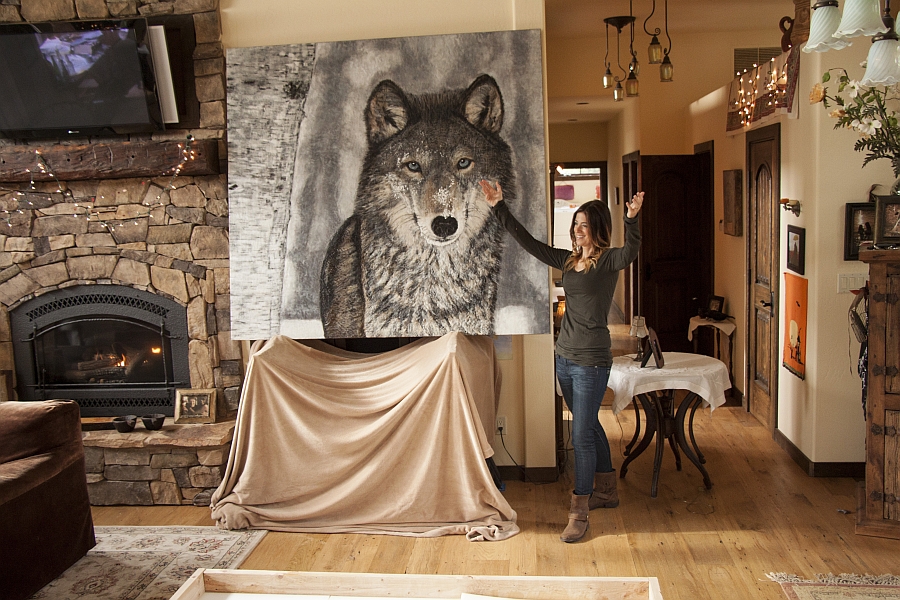
Here is a two-part exclusive interview that gives you insightful glimpses into the life, work and design philosophy of Theresa and also showcases her mesmerizing, timeless pieces as well. We will let Theresa take over now!
Theresa Stirling: My heartfelt thank you to you, Alex, Sherry and Decoist team; it is an honor to share with you. Your reach is remarkable and we are so very happy to start this dialogue with you and your readers on two of my very favorite subjects- art and interiors.
D: The art of “Encaustic Painting” is not something that most are familiar with. How would you describe it to someone who has never heard of it before?
TS: Encaustic painting literally means to paint or to “burn in” with hot beeswax. With ancient roots, encaustics go back to the 5th Century BC, when the Greeks were sealing sailboat hulls then applied it to sculptures, murals, boats and architecture. Encaustic art means slowly applying hot wax to a board surface, often a wood panel, then slowly and layer by layer, fusing or melting each brushstroke. The wax is often mixed with natural resin (damar) for its hardening qualities and pigments for color. Encaustic art can range from 1 or 2 to 50 some layers.
I have found a niche in what is known as “photo-encaustic art,” adding all those layers of beeswax over an image. I adjust the photo in software, adhere the print to my substrate, then brush on layer by layer, always melting it with an industrial grade blowtorch. We are seeing more encaustic art today, in galleries and online, being applied in unique and fresh ways. Lately, it has made strides in its 3-D applications, such as over stoneware and ceramics, or alone, as a sculptural medium. There is a saying, “Once you go wax, you don’t go back!” Lately, much work I have admired online has been created using cold-wax technique. I am intrigued and anxious to explore and incorporate that newer technique with my (hot wax) encaustics.
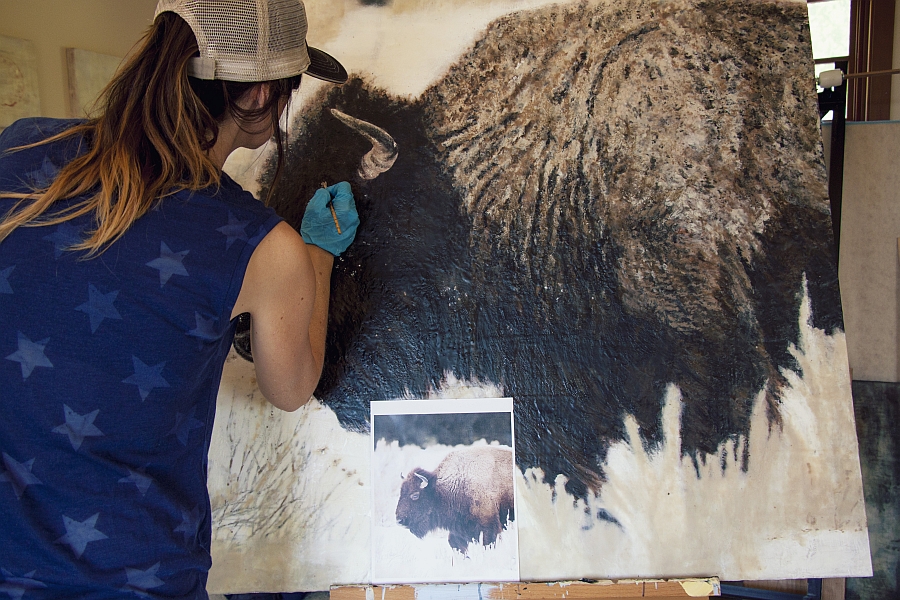
It is worth mentioning encaustics are also a rather green, sustainable art form, using inert products from bees and trees. Often times, I will take all my wax scrapings and melt them down to be re-used, or I may repurpose old boards from previous projects, depending on the body of work.
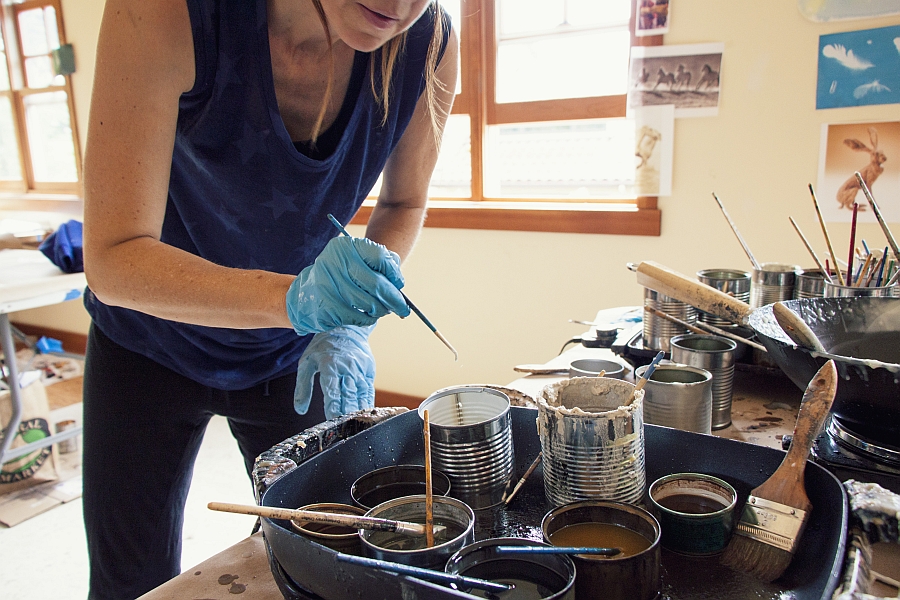
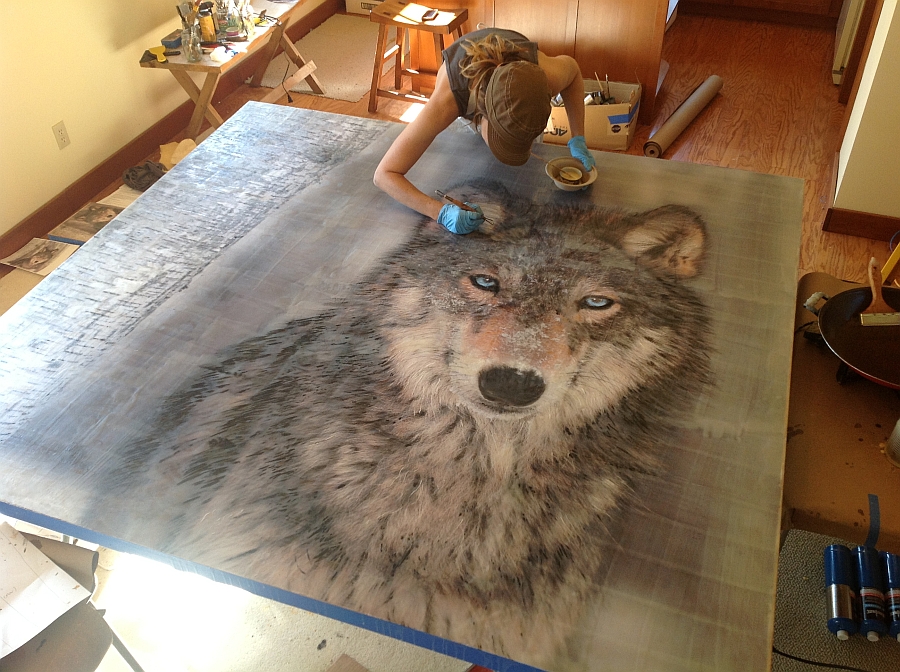
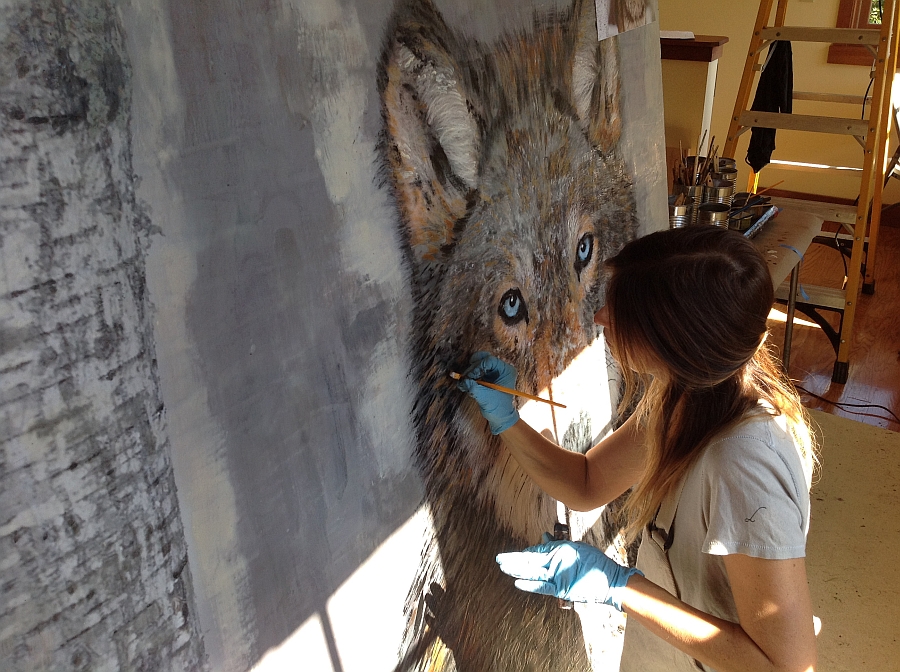
D: With a degree from Seattle at the University of Washington in Economics and over a decade in the marketing field, what persuaded you to turn toward art?
TS: My mother laughingly said recently, “Most people do not reinvent themselves.” A confluence of things came together in my life to make for a perfect storm – I had enjoyed biotech marketing for 10 years but craved an end-point or change. Much of my energies had been outward-focused on clients and customers’ needs, yet I wasn’t balancing or honoring my own needs and time. After much business travel, I had less wanderlust and a strong pull to nest a bit; create something beautiful, with personal meaning. My career was seemingly more about the numbers and the bottom line only. I was yearning for more, and longing to create and discuss beauty, texture and interiors, in truth.
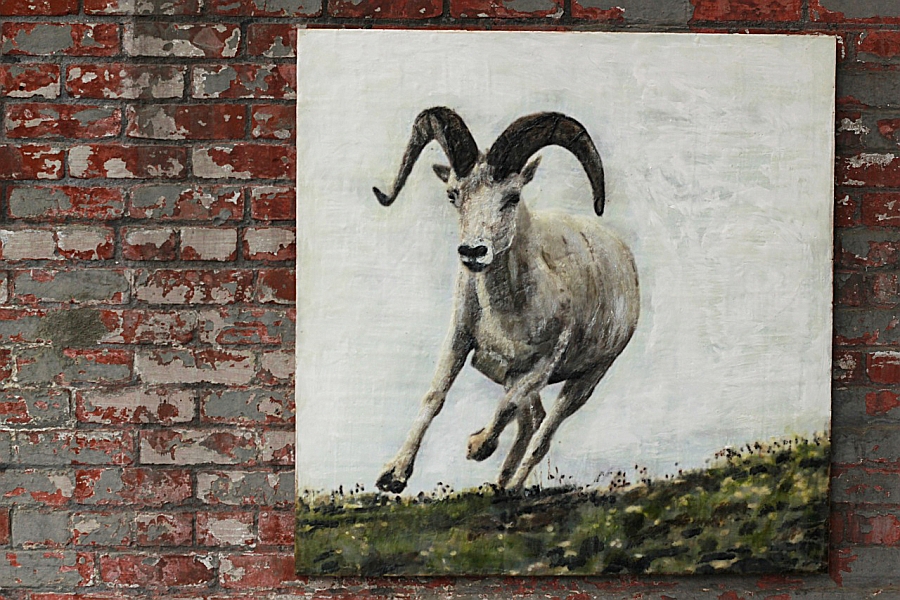
I was moved when I saw textured art, or long drapes of a certain fabric, and I knew I needed to move in a more satisfying, creative direction. So I gave notice, whittled away at my savings, and switched gears to “doing things for all the right feelings instead of all the right reasons.” I realized there was no price on saving my spirit and my soul. Oh, and took my mum to Tuscany for a leisurely “wash-out.” Fed my soul. I am profoundly grateful that my business experience has led me to run my art business in a professional, thoughtful and efficient way. None of that was wasted.
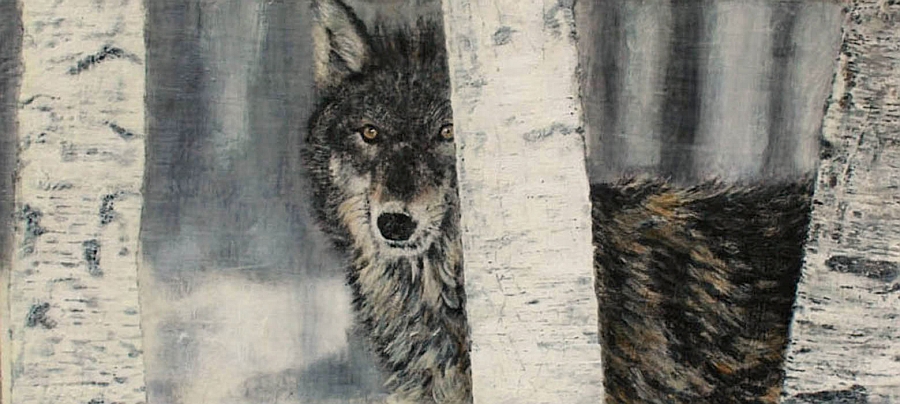
My art practice has grown from creating gallery collections, as well as collaborating closely with homeowners on custom art for their interiors. It has been a dream to enter into some of the homes I have, to date, from Anchorage to Nantucket. It is my strong belief that when we are doing the work we are meant to do, we are operating as our highest selves; the very best we can be. From the many decisions along the way, I am intent on designing the life I wish to live; One full of family, celebration, and contentment. Life today feels rich, without compromise!
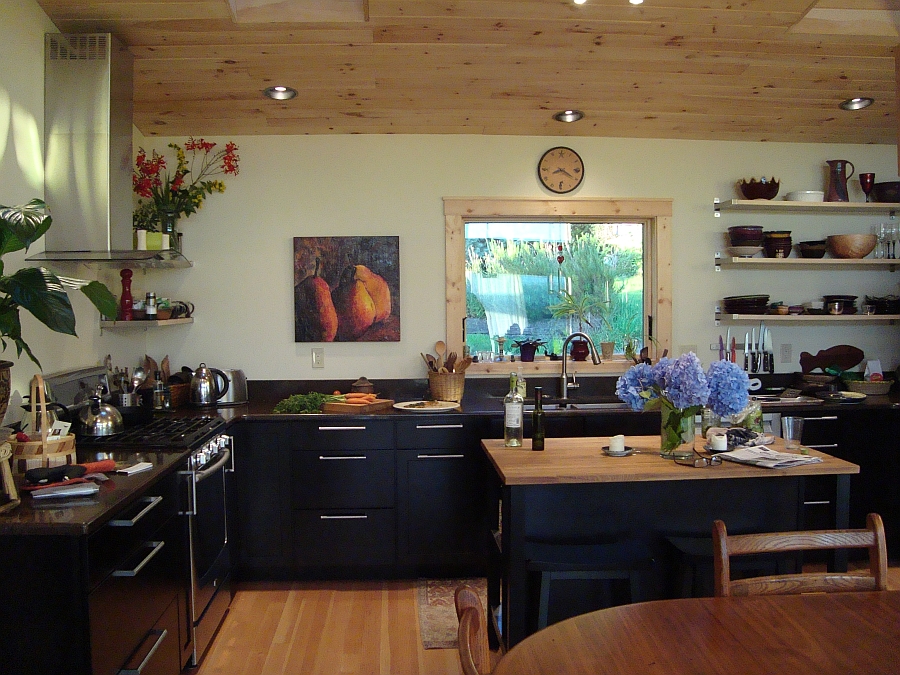
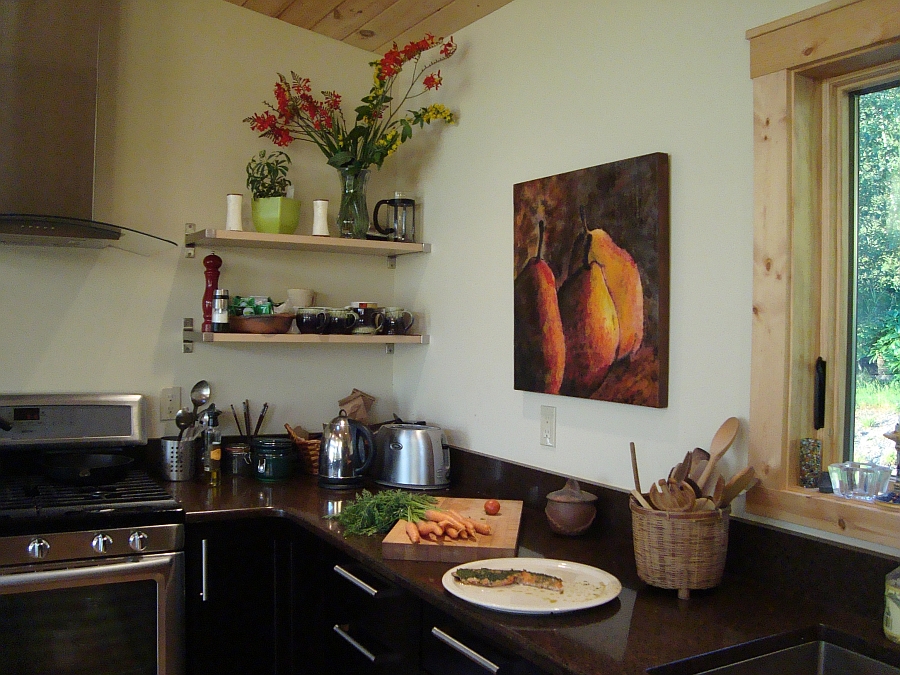
D: Why did you narrow down your interest to “encaustic painting”? Were there any early inspirations? Work of any specific artists that really opened this world up to you?
TS: Indeed, I was awestruck with early works of Betsy Eby and many mixed media artists that were doing interesting surface-texture approaches. Michael Schultheis has stunning mixed-media composition, as does Adele Sypesteyn. I often turned to the works that looked roughed-up a bit, a bit disheveled, those that incorporated bits or rusty nails, something that pried it away from perfect and made it beautiful-with-rusticity. I finally found a local wax artist who was showing work at the coffee shop, and paid her for a couple of hours, hands on, in her studio. I got to see the real magic of grinding your own damar crystals (natural tree sap/resin), melting the wax, adding the pigment powders, fusing with a heat source and scraping wax for reductive looks.
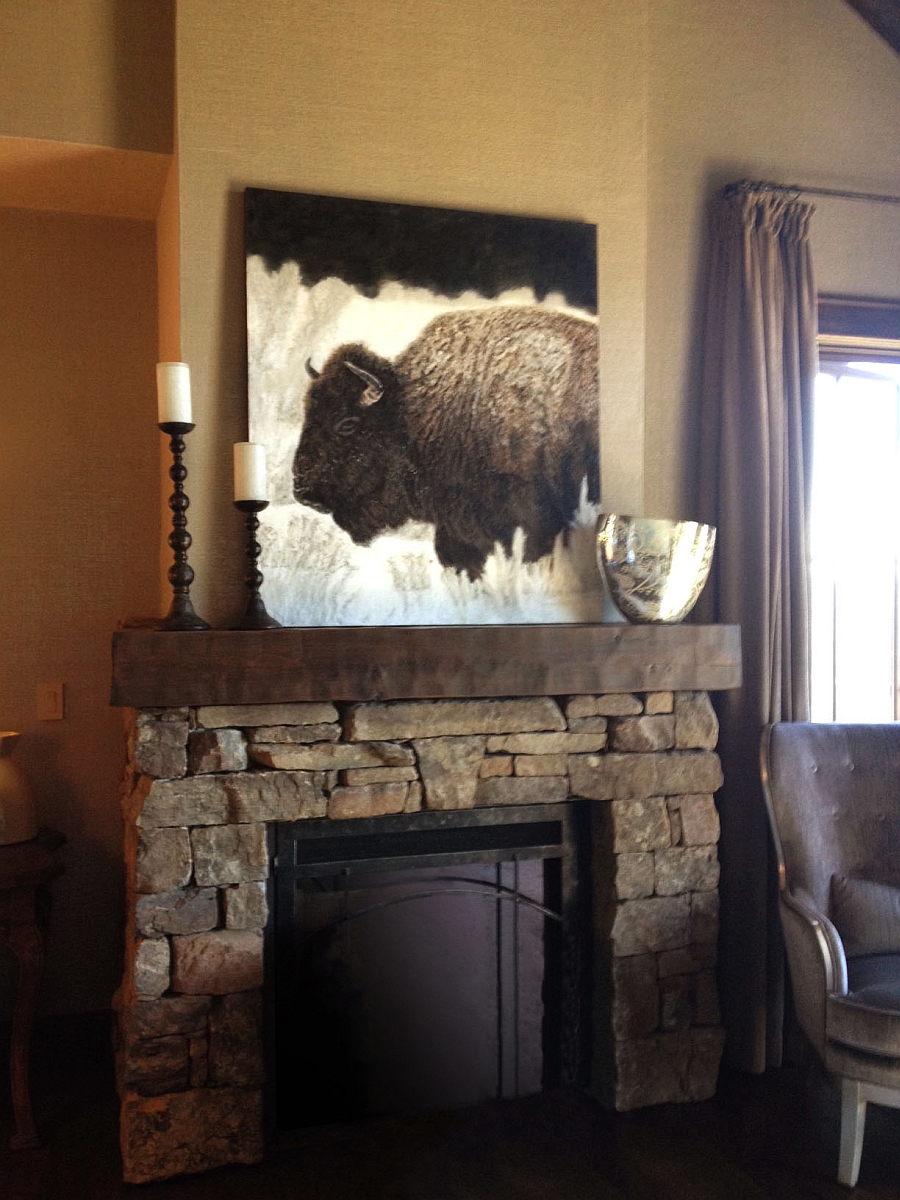
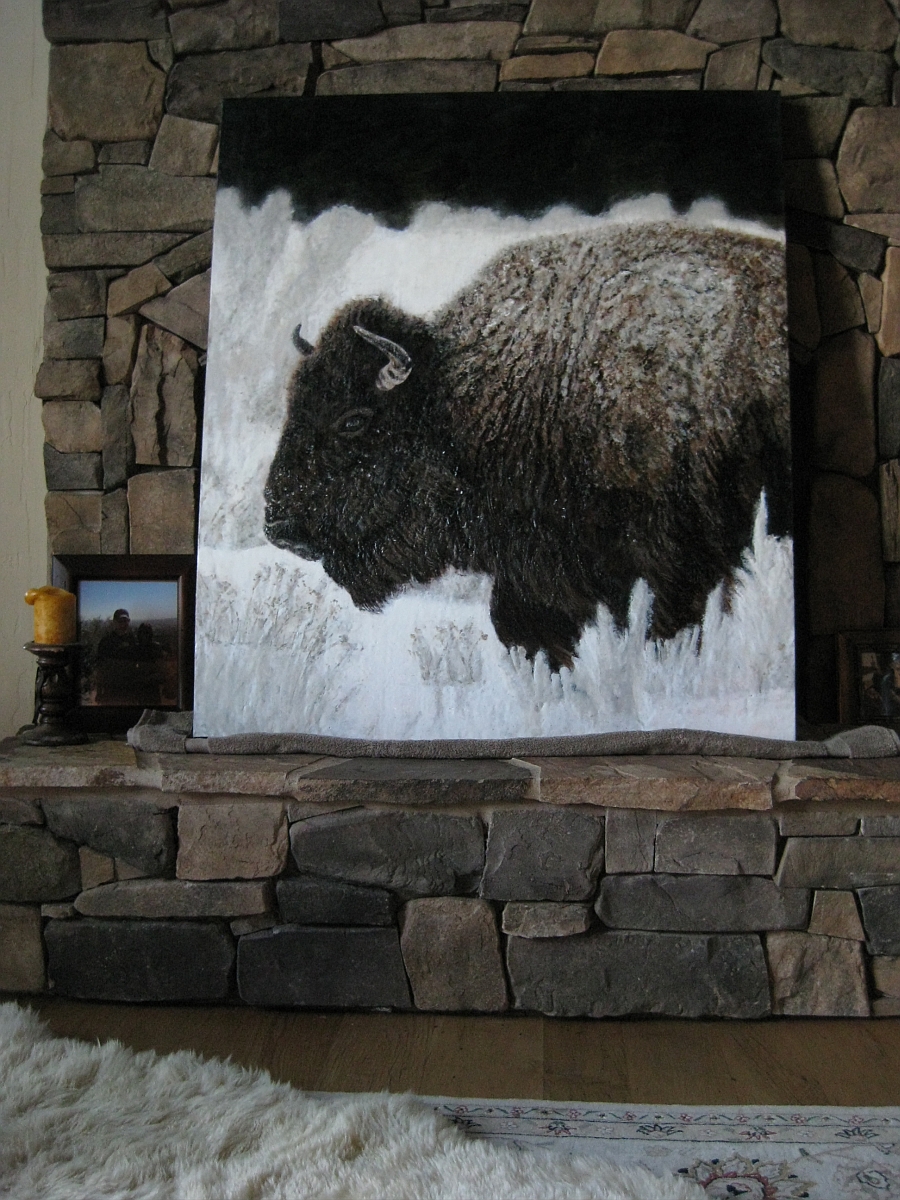
I then enrolled in some art intensives in Seattle at Pratt Fine Arts. Their instructors are first-rate and know their trade, yet weren’t above dropping to their knees, on a gritty floor, to demonstrate soldering or melting metals into the wax. I was hooked with encaustic at first sight and am still smitten after more than 10 years. I sat down with artists who were creating beautiful work and had made the transition to full-time. I asked the hard questions and got to see that life close up.
It feels like I haven’t even touched the surface with the work I am doing; there are so many exciting directions to take. Encaustics can have dreamy translucence, see-through layers, intense opacity, or can be rough, smooth, matte, or shiny. The wax can entomb precious objects, mementos, photos, or lines incised right into it… It is both forgiving and fragile, and takes much time to learn the touch on how deeply to scrape or how lightly to fuse with the blowtorch.
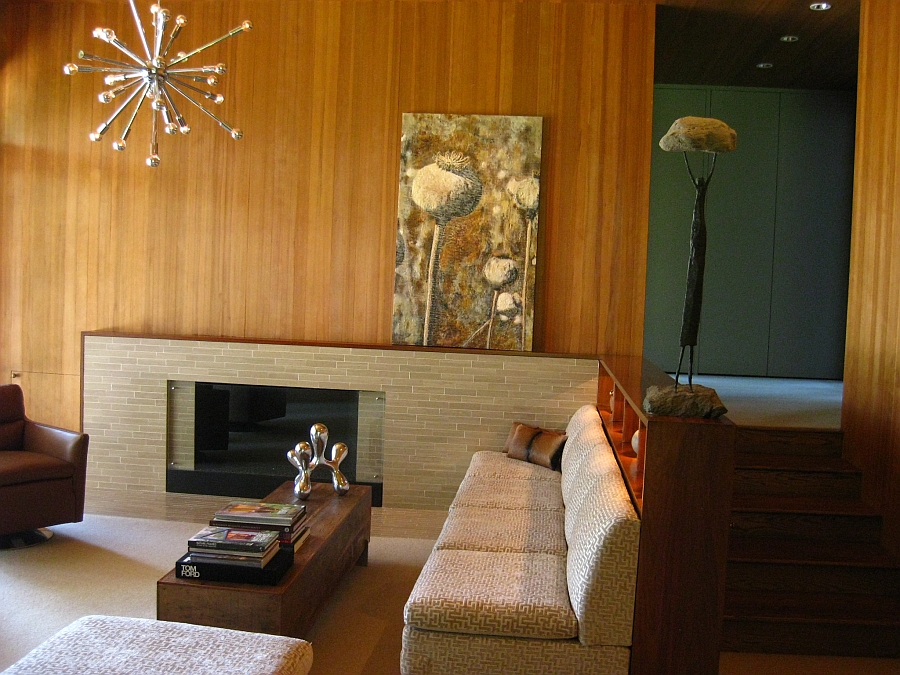
D: One of the things that really caught our attention while flipping through your previous interview was how you talked about “Timeless style, yet well-timed design”. Could you describe to our readers the essence of this approach towards design and art?
TS: Creating work that is timeless, yet current, is the “hat-trick” today. With each piece, my goal is to create a contemporary-classic, in some way. Timeless, for me, means good construction, solid feel and a soothing quality from its very essence. Think of when you enter a gentlemen’s club or a country club; it has that dark wood and timeless aura that wraps itself around you. I try and impart that to my work, staying out of trend, striking that delicate balance of being old-world yet current. Good art should have staying power. Many people have seen horses painted in oils, for example, but many haven’t seen thundering hooves, only, kicking up dust in sepia tones, all in beeswax plus oil over photography!
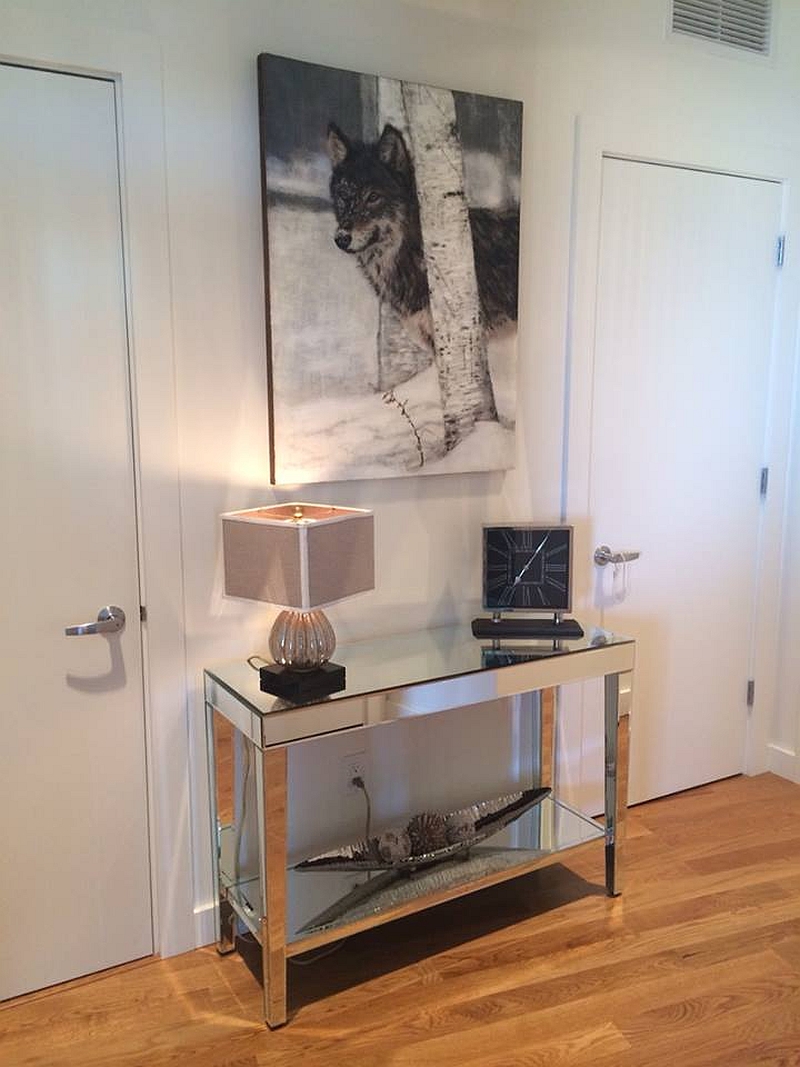
The high notes, for me, are the rich colors, and then depth of layering; seeing the collector respond to this medium in a way that other mediums don’t seem to elicit. I also tend to let a piece have a natural looseness – maybe a dribble of wax here, or a scrape off there. It lends a patina, that essence of timelessness. My aim is to choose imagery wisely, and do it with elegance and rusticity. My collectors have commented that “they are anxious to have a piece to share with their friends, in a medium that no one has seen.”
Each piece I create is aimed at truly being one-of-a-kind, not able to be duplicated, and giving the viewer reason to pause and gaze into the dimensions. One collector said he likes knowing, “the wax will still be here when we are all gone.”
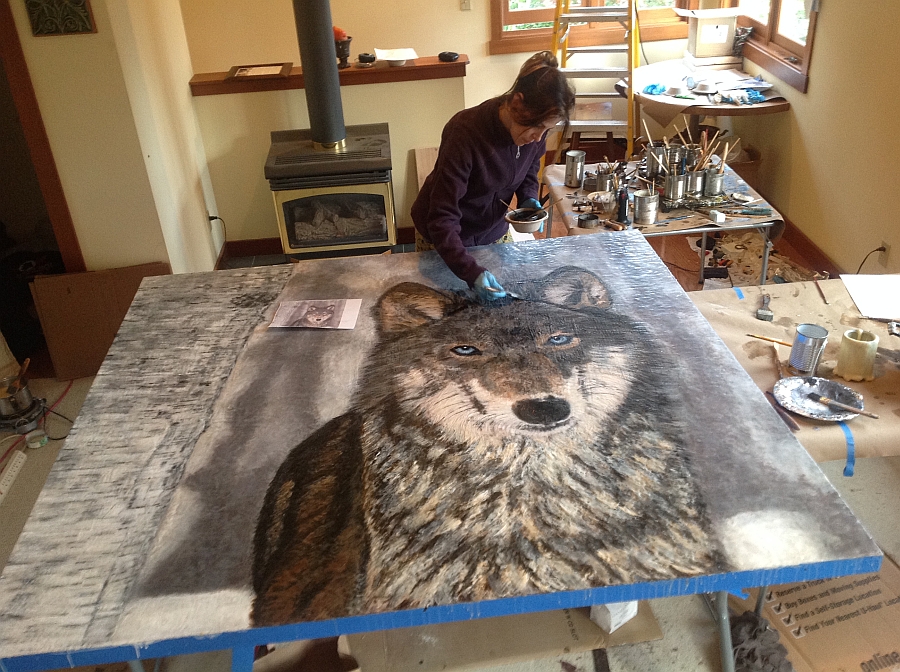
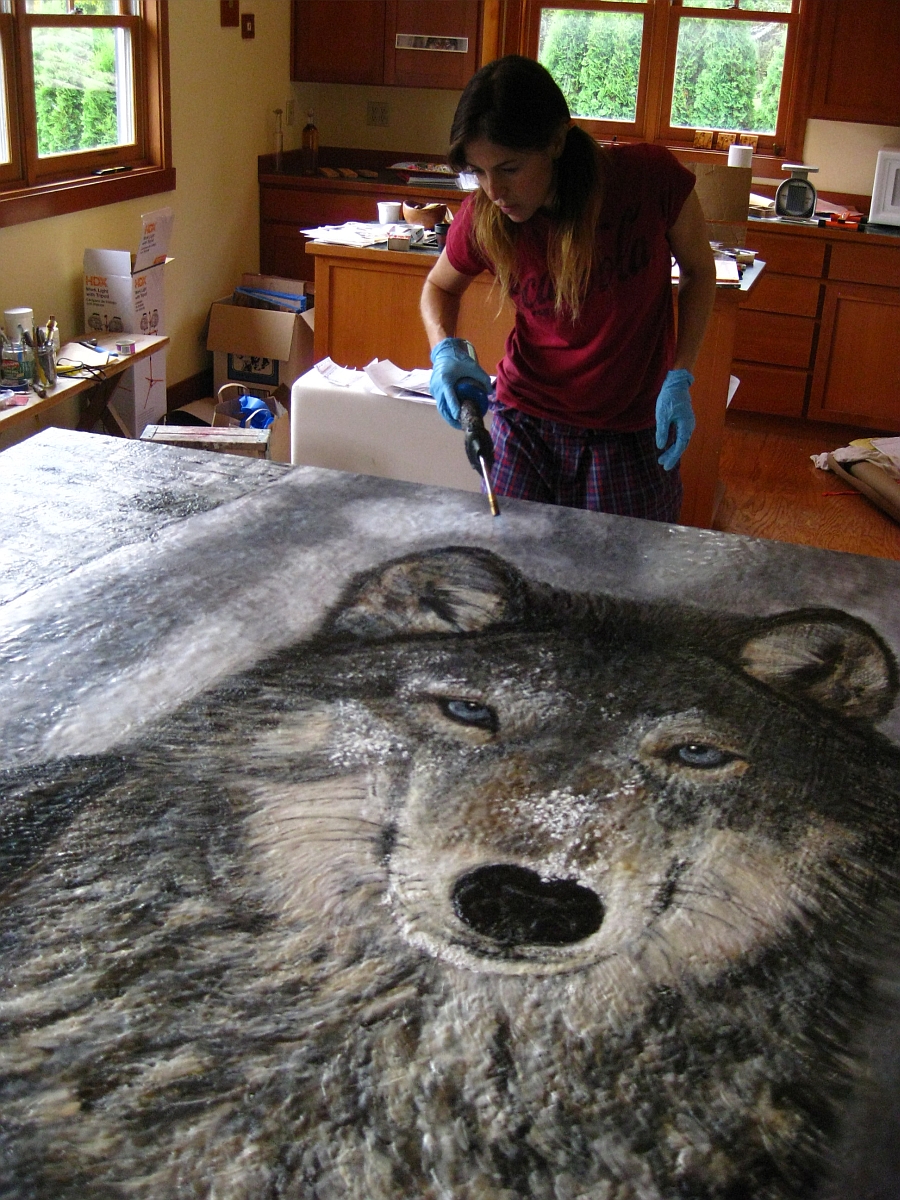
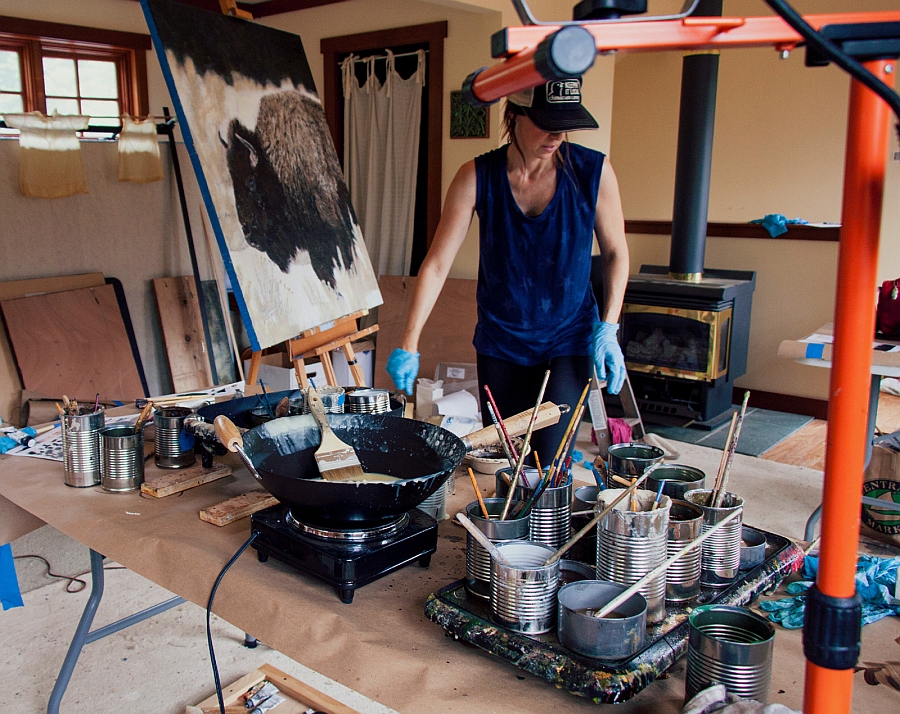
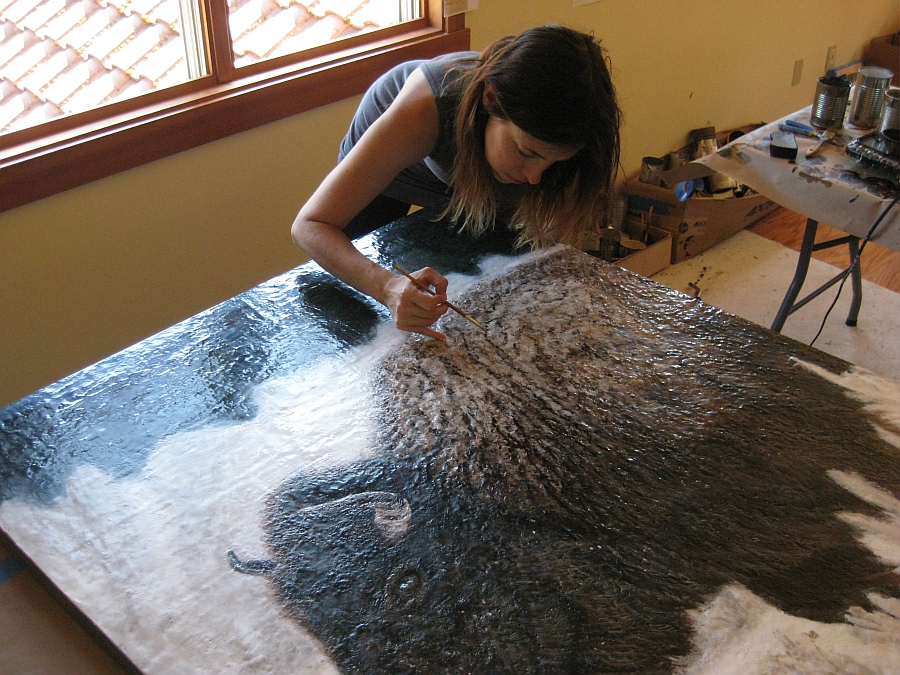
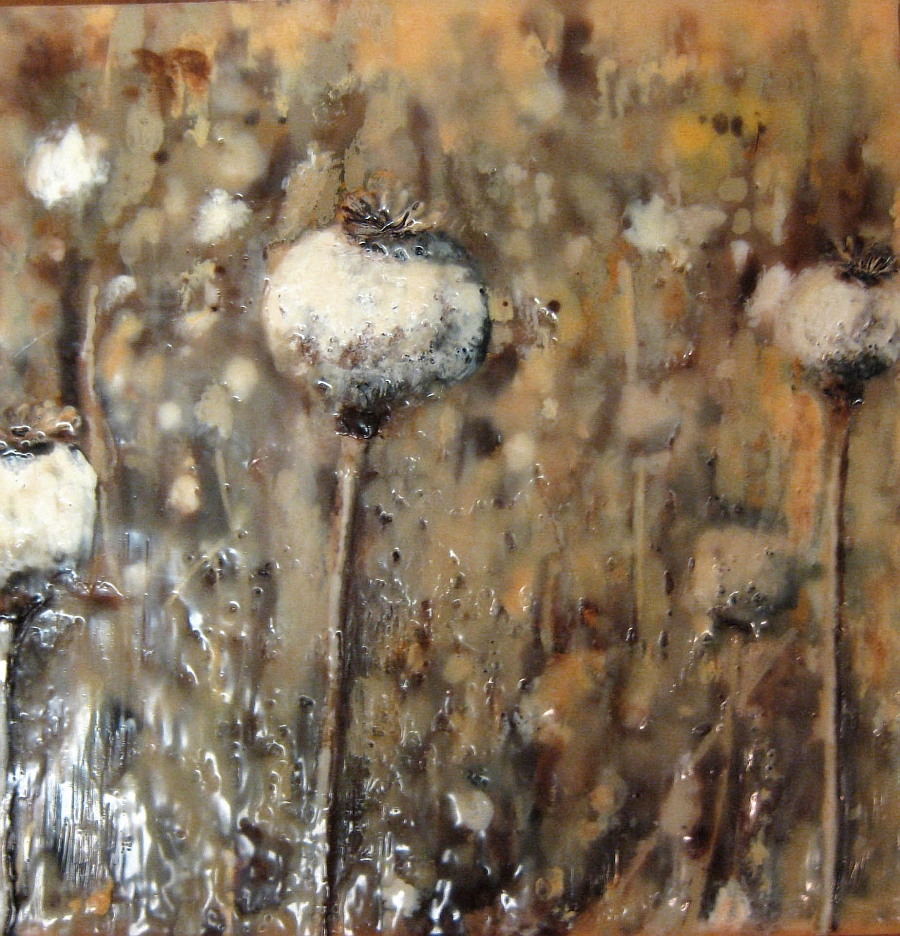
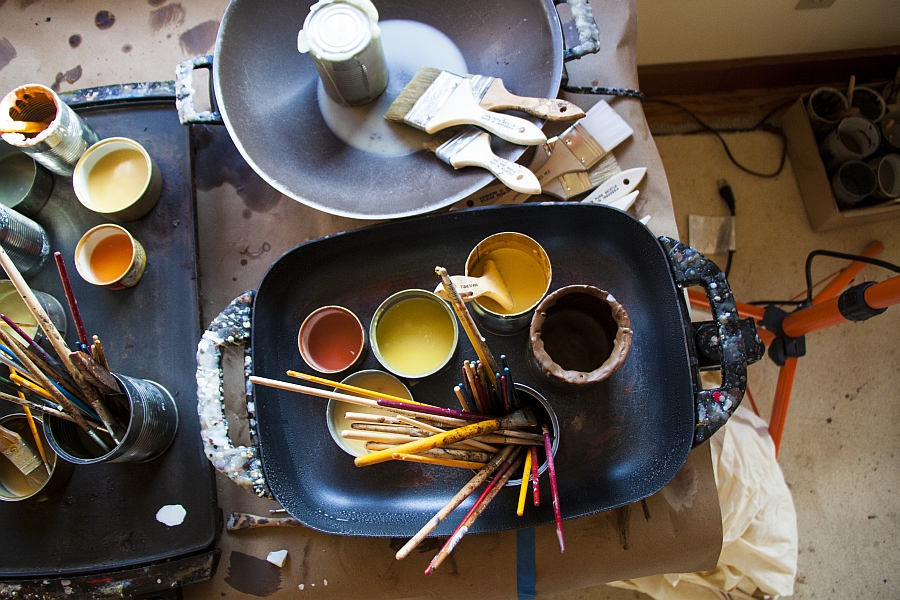
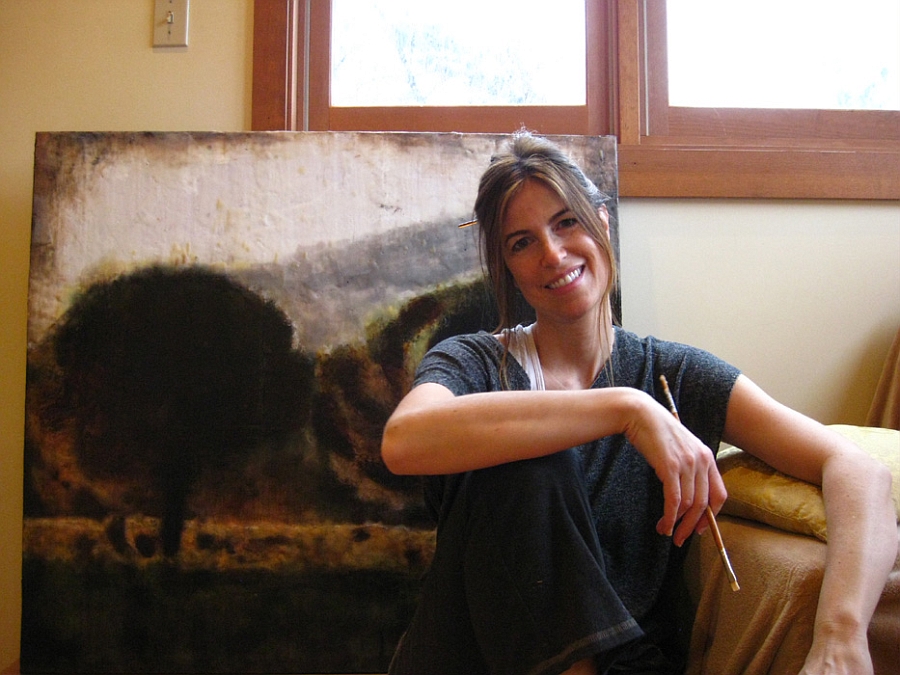
You can catch part two of the interview next week on Decoist, where Theresa sheds light on her design style and art inspirations, and of course goes through the toughest test for any artist: picking her favorite pieces!












